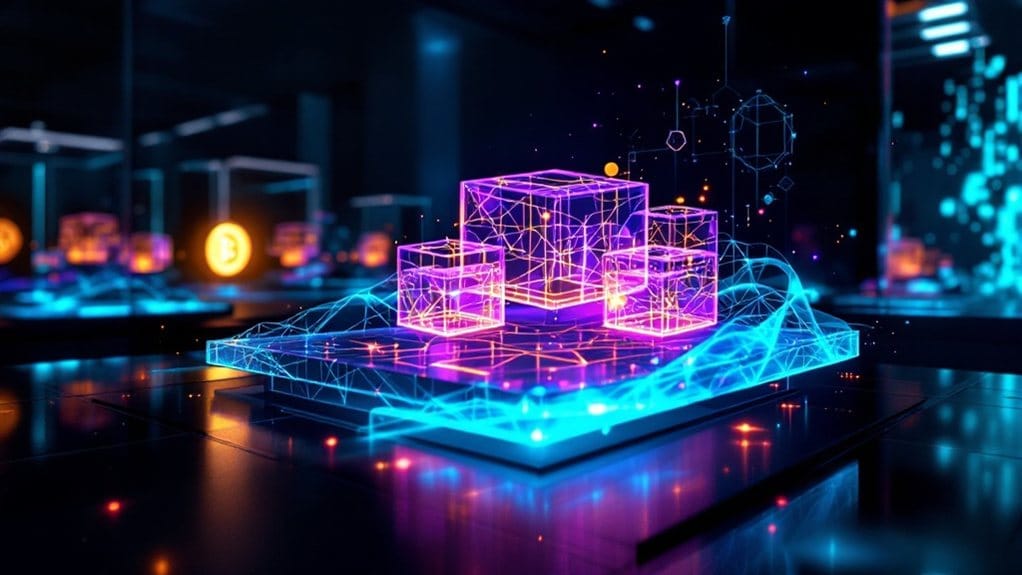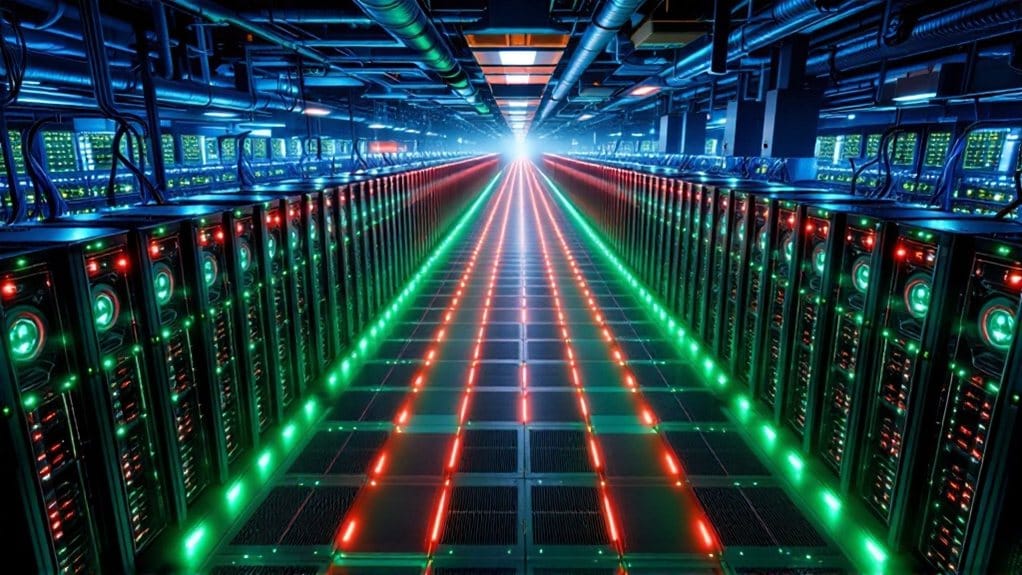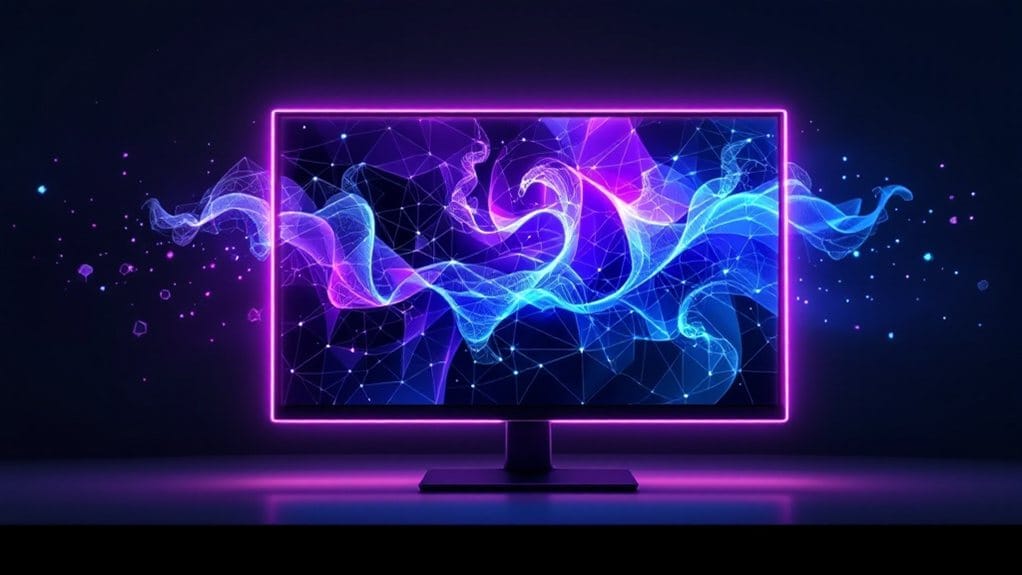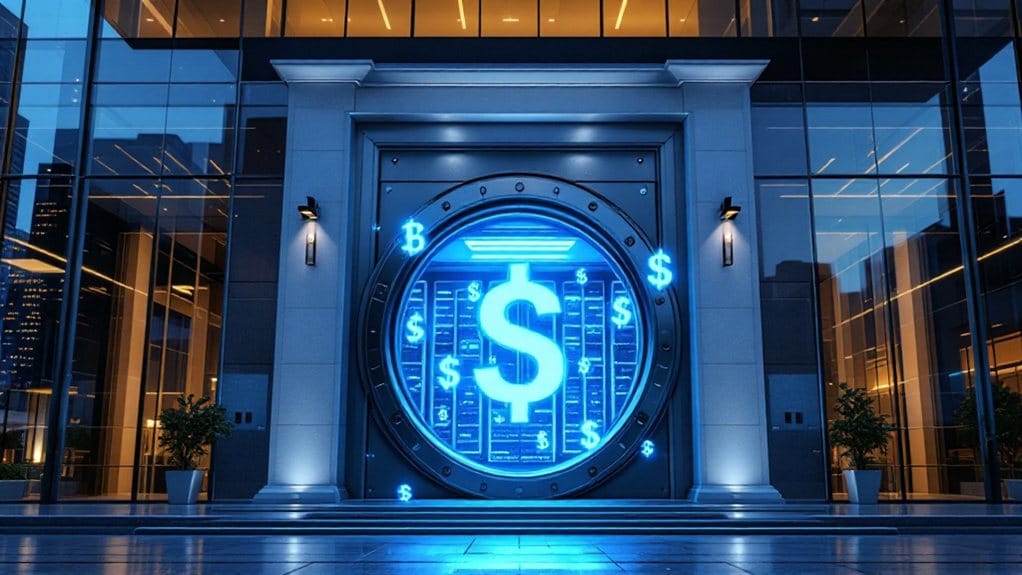NFT (Non-Fungible Token) art represents unique digital assets verified through blockchain technology, enabling artists to establish provenance and monetize digital creations. The market, valued at USD 2.46 billion in 2023, has transformed traditional art collection by implementing innovative royalty structures and ownership verification systems. Despite experiencing a 63% decline in 2023, the sector anticipates growth to USD 34.27 billion by 2032, driven by mature collectors and technological integration. This evolving landscape offers insights into the future intersection of digital creativity and blockchain verification.

As the digital art landscape continues to evolve, Non-Fungible Tokens (NFTs) have emerged as a transformative force in the global art market, reshaping how digital assets are bought, sold, and authenticated. These unique digital tokens, stored on blockchain platforms like Ethereum, establish verifiable ownership and provenance for digital artworks, allowing artists to monetize creations that were previously difficult to sell due to their inherently reproducible nature. The technology enables permanent verification of creative ownership on the blockchain, providing artists with unprecedented control over their digital works.
The NFT art market has demonstrated remarkable growth potential, expanding from USD 2.46 billion in 2023 to an expected USD 3.30 billion in 2024, with projections suggesting a value of USD 34.27 billion by 2032. Despite experiencing a 63% decline in sales during 2023, the market continues to attract diverse participants, from traditional collectors to digital enthusiasts, with four in ten collectors investing between $101 and $1,000 per artwork. The market’s resurgence in 2024 is driven by mature collectors and utility-driven approaches, alongside growth influenced by positive media coverage of cryptocurrencies.
NFT art market growth soars toward USD 34.27 billion by 2032, attracting diverse collectors despite recent market fluctuations.
Geographic distribution of NFT art activity reveals North America’s dominance, capturing 22% of market share in 2023, while the Asia Pacific region exhibits accelerated growth due to increased cryptocurrency adoption. Similar to the gaming industry’s success with player ownership, NFTs enable artists to maintain control and monetize their work across different platforms. The integration of emerging technologies, including virtual and augmented reality, continues to drive market expansion, while blockchain platforms provide crucial infrastructure for secure transactions and ownership verification.
The impact of NFTs extends beyond simple ownership records, fundamentally altering the art market’s dynamics through innovative royalty structures that benefit artists from subsequent sales. Traditional art institutions are adapting to this digital transformation, as one-third of high-net-worth collectors now utilize NFT platforms for art acquisition, though the market shows significant concentration with the top 1% of NFT wallets controlling 70% of circulating tokens.
These digital assets represent a paradigm shift in art collection and verification, offering solutions to long-standing challenges in digital art ownership while creating new opportunities for artists and collectors alike. As the technology matures and markets stabilize, NFTs continue to bridge the gap between traditional art markets and the digital frontier, suggesting a future where digital and physical art markets coexist and complement each other.
FAQs
How Do I Protect My NFT Art From Being Copied or Stolen?
NFT artists can implement multiple protective measures: storing private keys in hardware wallets, utilizing two-factor authentication, and embedding watermarks in artwork.
Regular monitoring through blockchain analytics tools and reverse image searches helps detect unauthorized copies.
Legal protection includes proper copyright registration and documentation of ownership rights.
Moreover, minting through reputable marketplaces with established security protocols reduces theft risks while maintaining authenticity verification through blockchain records.
Can I Sell My NFT Artwork on Multiple Platforms Simultaneously?
Selling NFT artwork on multiple platforms simultaneously is technically possible but requires careful consideration.
Artists must navigate platform-specific terms, avoiding exclusivity violations while managing consistent pricing across marketplaces.
Key factors include:
- Transaction fees between platforms
- Market saturation risks
- Tracking requirements for listings
- Platform-specific restrictions
- Potential impact on artwork value
To maintain effectiveness, sellers should implement strategic pricing and monitor cross-platform performance metrics.
What Happens to My NFT Art if the Hosting Platform Shuts Down?
When a hosting platform shuts down, the NFT’s metadata accessibility depends on its storage method. If metadata is stored on centralized servers, access may be lost permanently.
However, NFTs using decentralized storage solutions like IPFS remain accessible as long as nodes maintain the data.
To mitigate risks, collectors should verify platforms’ storage methods and consider platforms utilizing decentralized solutions, which offer greater resilience against shutdowns.
Are NFT Art Sales Subject to Traditional Capital Gains Taxes?
NFT art sales are indeed subject to traditional capital gains taxes, with the Internal Revenue Service classifying NFTs as property.
Short-term gains from NFTs held less than one year are taxed at ordinary income rates, while long-term gains apply to assets held longer.
NFTs may be categorized as collectibles, potentially triggering a higher 28% tax rate, similar to physical art.
Furthermore, professional NFT artists face ordinary income taxation on their initial sales.
Can I Convert My Physical Artwork Into an NFT Collection?
Physical artwork can be effectively converted into NFT collections through a systematic digitization process.
Artists must initially capture high-quality scans or photographs of their pieces, then improve them using digital editing software like Adobe Photoshop.
The digitized artwork can then be minted as NFTs on platforms such as OpenSea or Rarible, where creators can specify edition sizes, pricing structures, and royalty arrangements for future sales.









